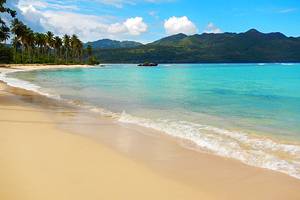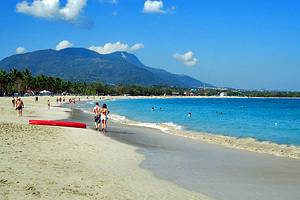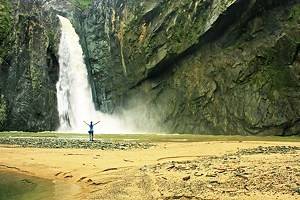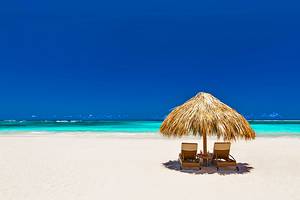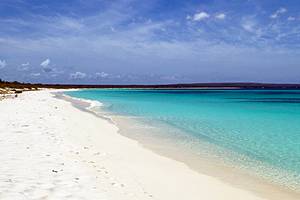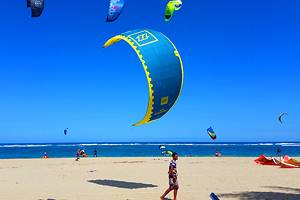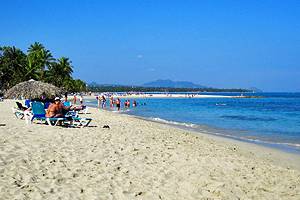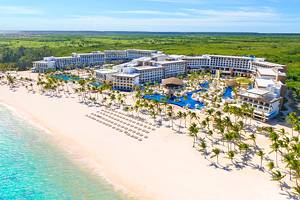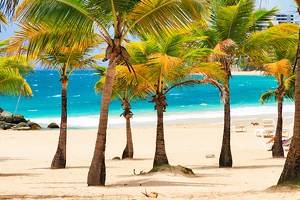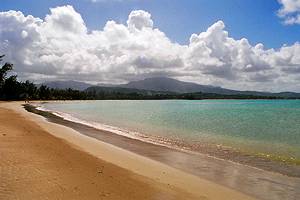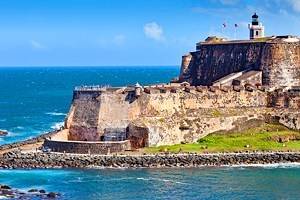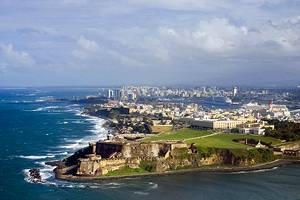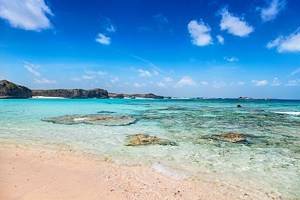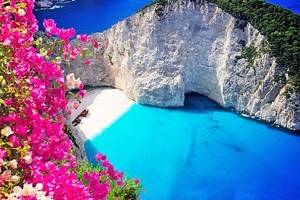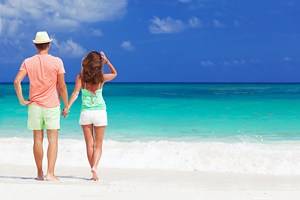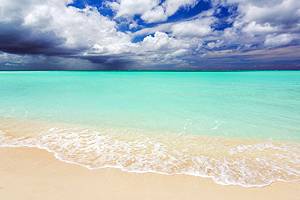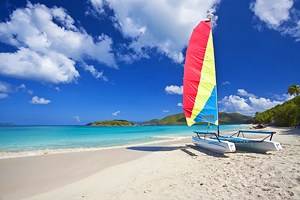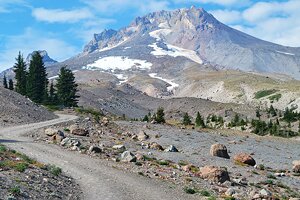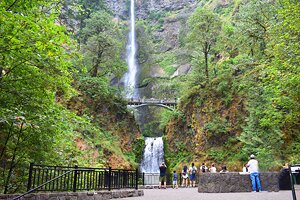18 Top-Rated Things to Do in Santo Domingo
Santo Domingo's Zona Colonial is the highlight of this city and where most of the important tourist attractions are located. The old center is a delightful mix of history and modern Dominican life. Crumbling 16th-century ruins scattered between wonderfully restored colonial buildings are a constant reminder of this city's history.
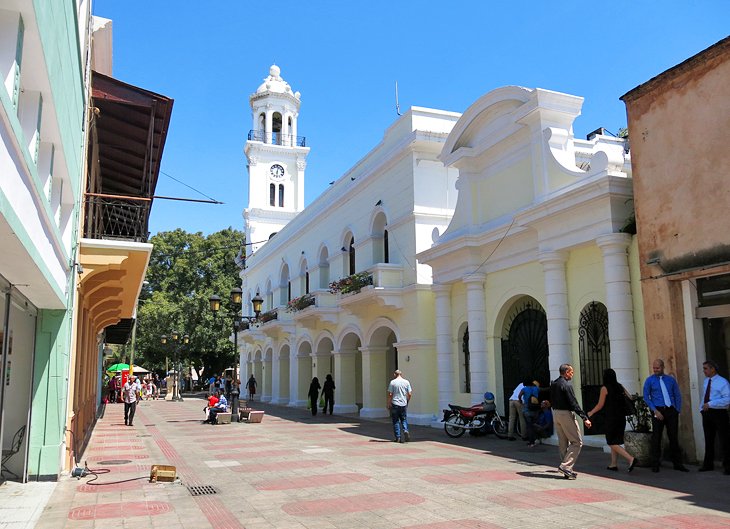
Founded by Christopher Columbus in the late 1400s, this first city of the New World is where Columbus lived and is buried. Today, the entire colonial district, Zona Colonial, is a UNESCO World Heritage Site, and many of the historic buildings house museums, restaurants, and hotels.
Most of the attractions and things to do described here are within the Zona Colonial. This area is relatively compact and easy to explore on foot, but with so much to see, it's easy to spend a few days here sightseeing and soaking up the atmosphere.
Narrow one-lane roads open onto parks with mature trees and old stone buildings. Outdoor restaurants, reminiscent of European cafés, offer inviting retreats from the heat of the day, where you can sit and watch life go by.
Parque Colón (Columbus Park) and Plaza España are two of the main tourist hangouts and good places to start your tour. You'll find numerous restaurants in these areas, as well as official tour guides offering to show you around and providing information on things to do in Santo Domingo.
- 1. Parque Colón (Columbus Park)
- 2. Catedral Primada de América (First Cathedral in the Americas)
- 3. Museo de las Casas Reales (Museum of the Royal Houses)
- 4. Panteón Nacional (National Pantheon of the Dominican Republic)
- 5. Plaza España
- 6. The Three Eyes (Los Tres Ojos) National Park
- 7. Chu Chu Colonial Sightseeing Trolley
- 8. National Botanical Gardens
- 9. National Zoological Park
- 10. Monasterio de San Francisco
- 11. ChocoMuseo Santo Domingo
- 12. Calle El Conde
- 13. Parque Independencia
- 14. Amber World Museum
- 15. Shopping
- 16. Convento de Los Dominicos
- 17. Bicycle Ride or Tour through Santo Domingo
- 18. Photographing the Zona Colonial
- Map of Things to Do in Santo Domingo
- Frequently Asked Questions about Santo Domingo
- When is the best time to visit Santo Domingo?
- What are the best day trips from Santo Domingo?
1. Parque Colón (Columbus Park)
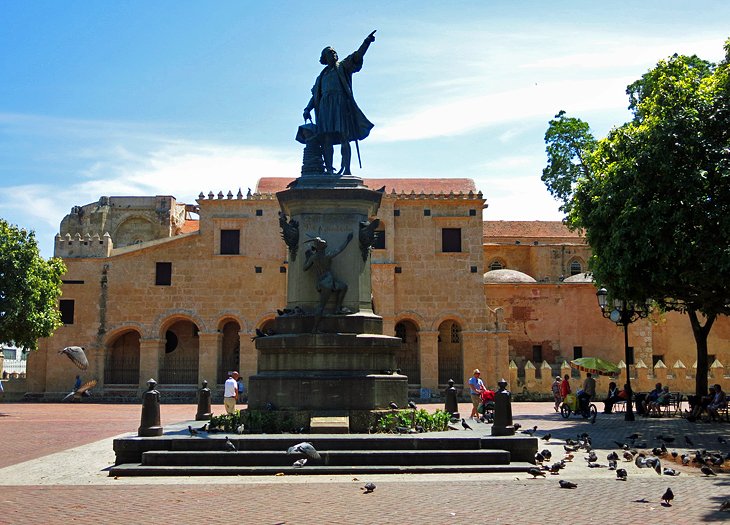
At the heart of the Zona Colonial is Parque Colón, the most lively and enticing square in the city. Musicians and street performers frequent the square, shoe shiners set up along the street side, and children chase pigeons around the statue of Christopher Columbus, which stands in the center.
On the south side of the square is the Catedral Primada de América, the first cathedral built in the Americas. Constructed in the early 1500s and completed in 1540, its real name is Basilica Cathedral of Santa María la Menor.
Running along the north side of the Parque Colón is Calle El Conde, the city's main pedestrian street, with a couple of restaurants with outdoor tables that look onto the park. This is the best place to sit and appreciate the sights and sounds of this beautiful square.
If you are looking to take a tour, the Chu Chu Colonial tourist trolley departs from the east side of the square.
This is also a perfect area to base yourself if you are spending a night or more. Not far from Parque Colón is the quaint Boutique Hotel Palacio, set in a historic building with a beautiful courtyard and old-world charm. It offers a variety of luxury to mid-range rooms that vary in size and price. Another hotel worth considering, with a similar colonial atmosphere, is the El Beaterio Casa Museo.
Location: Calle El Conde and Calle Arzobispo Meriño
2. Catedral Primada de América (First Cathedral in the Americas)
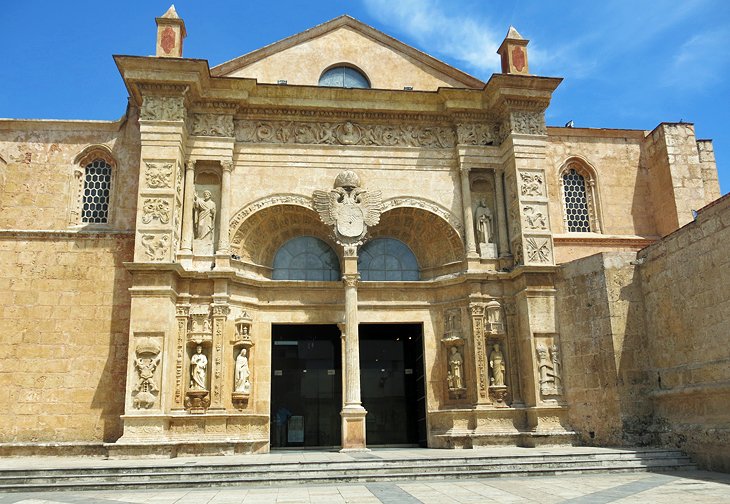
This impressive basilica, set on the south side of Parque Colón, was completed in 1540 and was the first cathedral built in the Americas. This is not a ruin but a functioning place of worship that still maintains many of the original features from the 16th century.
The original Mahogany doors open into the grand interior, where you can see the silver altar and a painting of the Virgin Mary from 1520. Although the real name is Basilica Cathedral of Santa María la Menor, tourist maps list this site as Catedral Primada de América.
Location: South side of Parque Colón on Calle Arzobispo Meriño
3. Museo de las Casas Reales (Museum of the Royal Houses)
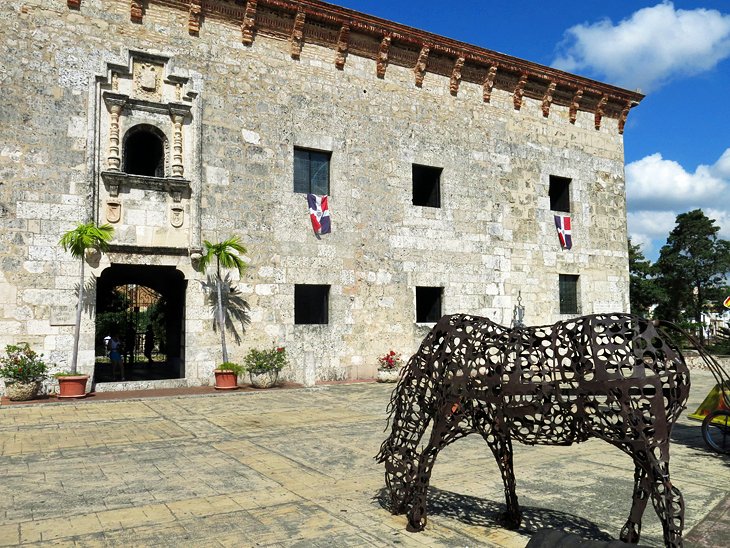
Built in the first half of the 16th century, this impressive structure was originally constructed on orders from Spain and designed to house the most important government offices of the New World. In the 1970s, it was turned into a museum to showcase the history and culture of the region.
Displays include Taíno artifacts, colonial furnishings, and an interesting weapons collection, among other items. The hallways are narrow in places, and on busy days the museum can feel quite congested, but the interior courtyard, with benches and a small garden, offers a pleasant reprieve.
Displays are in Spanish, but headsets with audio recordings in multiple languages are available with your admission fee.
Location: South side of Plaza España, on Calle Las Damas
4. Panteón Nacional (National Pantheon of the Dominican Republic)
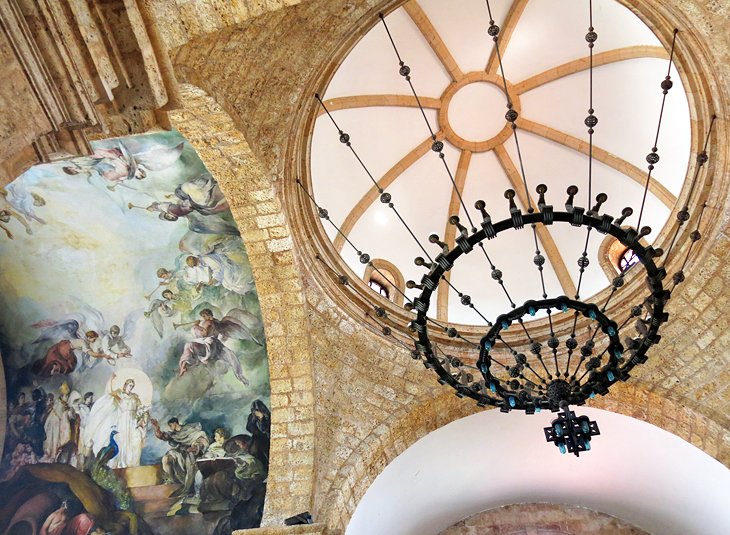
Originally constructed as a church in the first half of the 18th century, the building was converted to the national mausoleum in 1956 under the orders of dictator Rafael Trujillo to honor the country's most important people. In a twist he would not have envisioned, the building now houses, among others, the remains of the men who assassinated him.
Also interred here are famous names such as Francisco Gregorio Billini, Gregorio Luperón, Eugenio María de Hostos, and José Gabriel García.
The interior is beautiful, with marble tombs along the walls, arches, an ornately painted ceiling, and a huge Gothic-style chandelier. Opposite the entrance, at the end of a long red carpet, an eternal flame rises from the floor.
Location: Calle Las Damas, one block south of the Museo de las Casas Reales
5. Plaza España
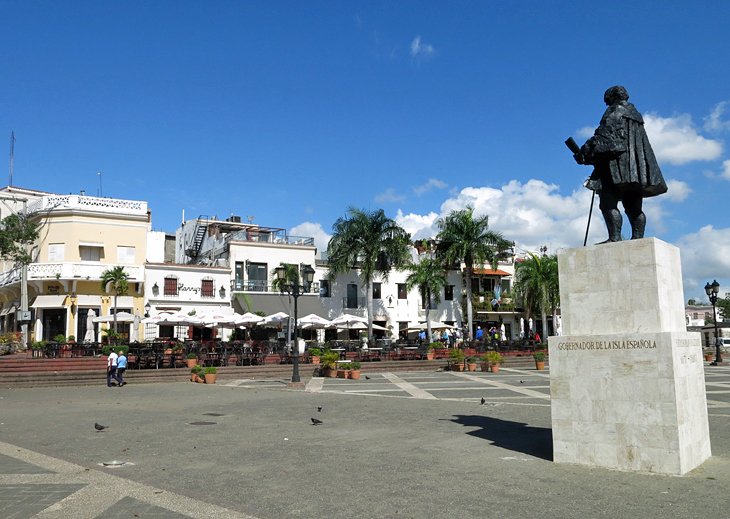
Plaza España is a large and open square on the edge of the Zona Colonial, near the Rio Ozama. Frequently the site of events and public gatherings, this is not an intimate square where you would go to sit on a bench and sip a coffee under a tree.
On the edge of the park are a number of restaurants with outdoor dining. Tour guides often hang out in the vicinity of the cafés and approach visitors to entice them into joining a walking tour.
On the square, opposite the restaurants and closer to the river, is the Alcazar de Colón. This former residence of the Columbus family is now a museum.
Location: Calle La Atarazana, or the north end of Calle Las Damas, beyond the Museo de las Casas Reales
6. The Three Eyes (Los Tres Ojos) National Park
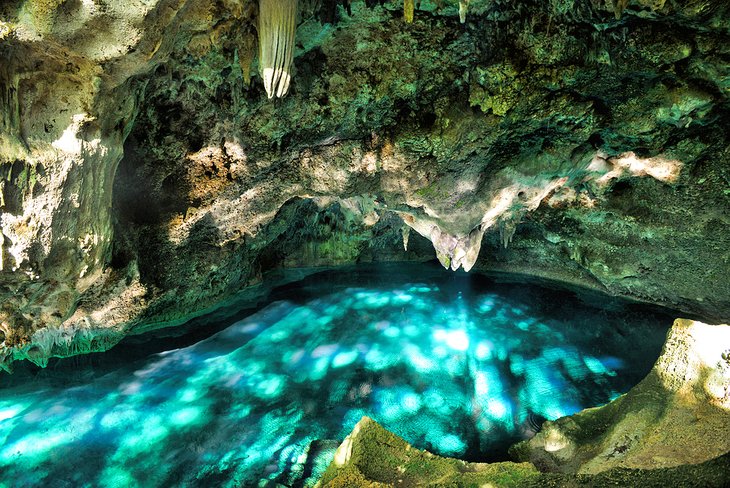
If all the historical buildings and the tight quarters of the Zona Colonial have you craving something more natural, take the 15-minute drive out to the 3 Eyes National Park. Be prepared to descend beneath the earth into lush and humid caverns, where you'll find crystal-clear waters in a series of four lakes.
The lakes are spectacular and always glass calm, making it easy to see how they received their names. With a bit of imagination, you might think they look like blue-green eyes.
The first lake you'll come to is called Aguas Azufradas, followed by La Nevera, then Lago de las Mujeres. To access the fourth lake, Los Zaramagullones, just pay a small fee and take a short and scenic boat ride. This lake can also be seen from above by following the walking trail to the overlook.
7. Chu Chu Colonial Sightseeing Trolley
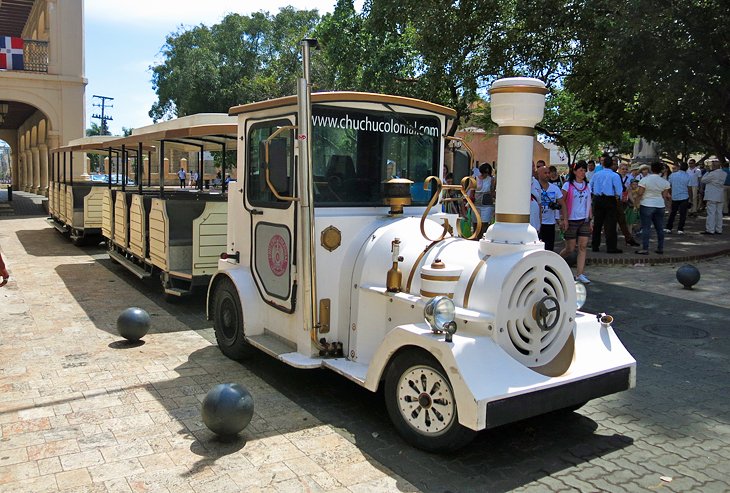
The Chu Chu Colonial is a small, open-air sightseeing train that runs through Santo Domingo's Zona Colonial. While the area is quite small and easily walkable, on hot days the Chu Chu is a tempting option.
The tour lasts about 45 minutes and lets you see the sights from the relative comfort of a shade-covered bench as it pulls you along cobbled streets and past the city's most famous sites. Keep an eye out for places you might want to visit after the tour. The tour starts from the east side of Parque Colón.
The Chu Chu Colonial runs every hour, 16 times a day.
Location: Parque Colón
8. National Botanical Gardens
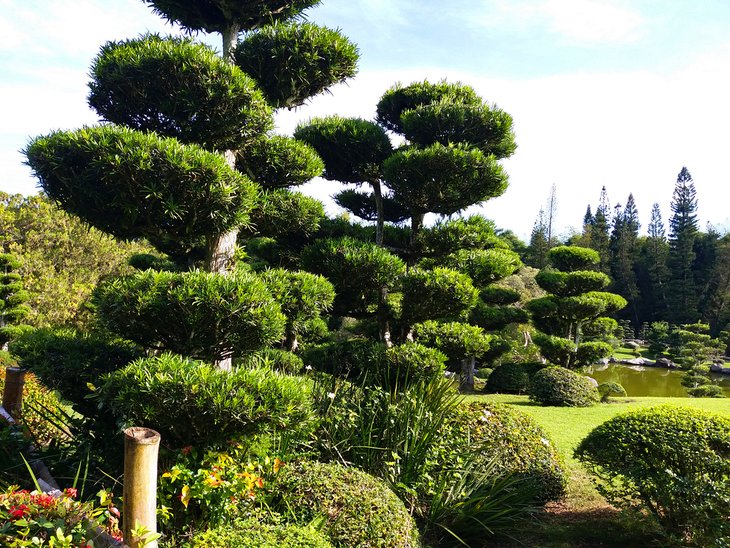
The National Botanical Gardens, known officially as the Dr. Rafael M. Moscoso Botanical Gardens, are a treasure of incredible biodiversity. The country has outdone itself with a garden that is comparable to many of the world's best. Situated on a hilltop offering good views out over the sprawling city below, the 400-acre garden is the largest in the Caribbean.
Highlights of a visit here include the Japanese Gardens, a huge floral clock, and viewing over 300 species of orchids. It's a wonderful place to stroll or, if you'd rather, take the trolley that runs on a regular basis. Bird-watchers take note, this is one of the best places in Santo Domingo to see rare avian species.
The botanical gardens are about 40 minutes from the Colonial Zone. Combine a trip here with a visit to the zoo.
9. National Zoological Park
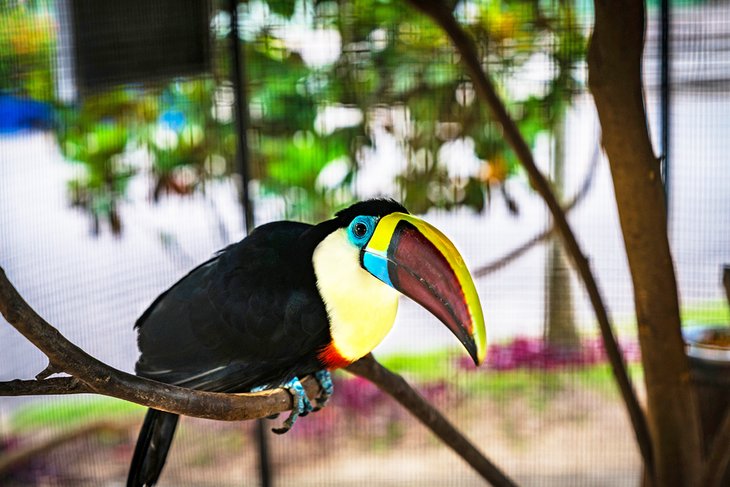
Families traveling together will love taking a trip to the National Zoological Park. Not only is it a fun day all around, admission is very cheap when compared with zoo prices around the world. A wide assortment of animals are on offer from around the world, with some of the highlights being a rhino, white tiger, jaguars, monkeys, and emus.
Kids will delight in riding the small train that passes by all the enclosures. Just hop on and hop off as you like. The zoo has recently undergone some renovation work in the main plaza, which has given it a nice refresh. Note that all the animal descriptions are in Spanish
10. Monasterio de San Francisco
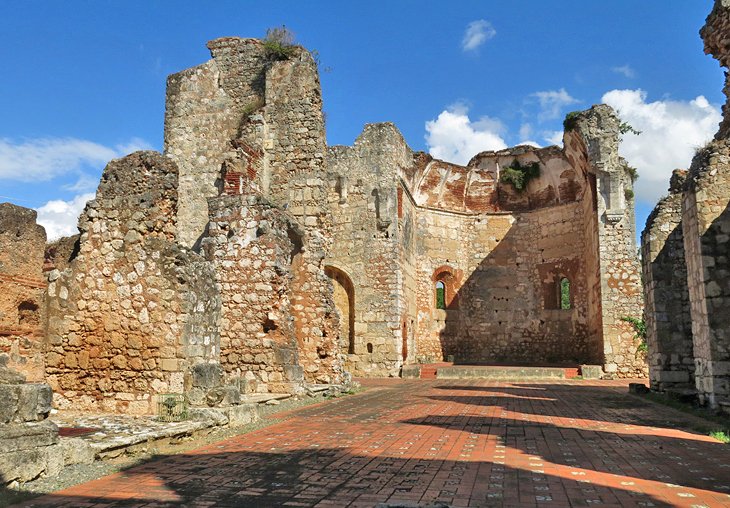
The ruins of Monasterio de San Francisco are one of the most important historical sites in the Dominican Republic. The first monastery to be built in the New World, it stands as a symbol of the trials and tribulations that have inflicted this city throughout the centuries.
The monastery has endured countless disasters, having been hit by hurricanes, devastated by earthquakes, sacked by Francis Drake, and used in battles, only to be repaired time and time again.
The site is gated and fenced on all sides, so entry is not permitted. You can, however, see the interior from the main door. The ruins are still occasionally used as a venue for some events.
It's a hot and sweaty walk uphill to visit this attraction. Fortunately several nearby restaurants offer cold drinks and pleasant shady spots to cool off.
Location: Calle Hostos and Calle Juan Isidro Perez
11. ChocoMuseo Santo Domingo
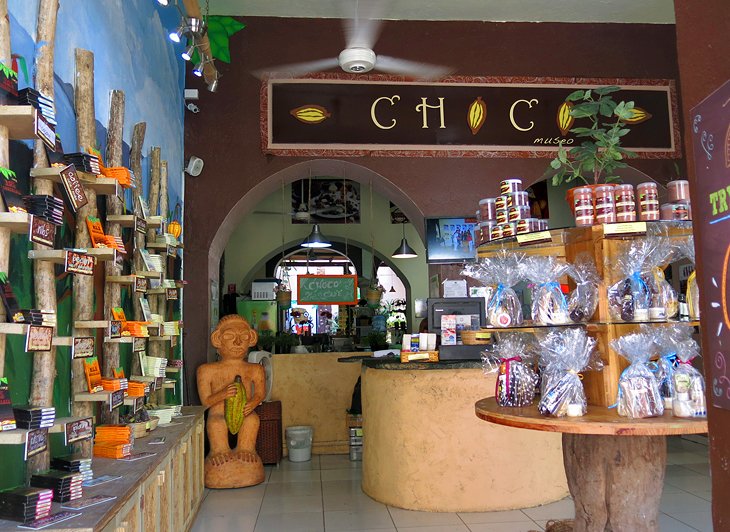
The ChocoMuseo is a tasty stop in the Zona Colonial. Housed in a 16th-century building, the museum and chocolate factory is an educational experience and a fun way to learn about the cacao industry in the Dominican Republic. You can sample pieces of chocolate and chocolate drinks or try out cacao-based beauty products.
Beyond the sampling counter is a small museum with displays on the history of cacao and the operation of drying and processing the cacao seeds. In the front portion of the store, you can purchase all kinds of chocolate goodies and products.
Displays are labeled in English and Spanish, and some of the staff speak English. The museum and chocolate sampling are free.
If the ChocoMuseo leaves you wanting more, consider strolling down the street a bit to the Kah Kow Experience shop. Here, you can enjoy a holographic theater presentation on how chocolate is made from forest to plate, see an actual chocolate factory, and even make your own chocolate bar.
Location: Near Parque Colón on Calle Arzobispo Meriño, just north of Calle El Conde.
12. Calle El Conde
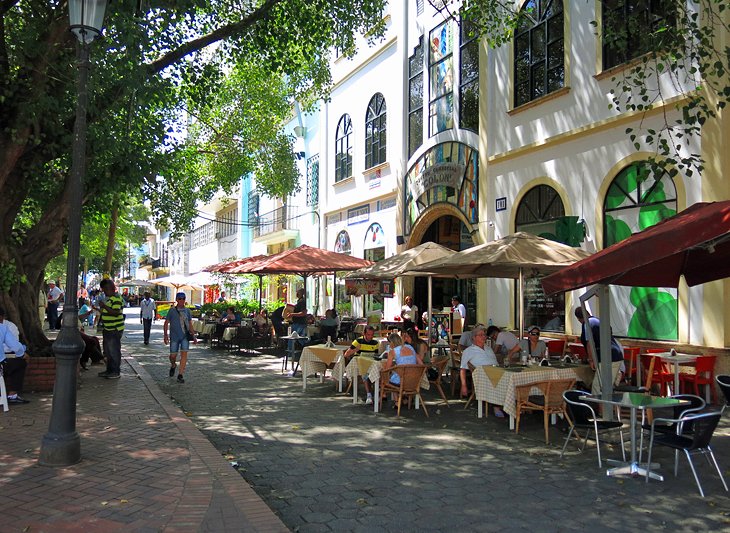
The best place to visit in Santo Domingo for outdoor dining is Calle El Conde. This pedestrian street runs from Plaza Independencia to Parque Colón and just beyond to the Rio Ozama. The most beautiful section is the portion closest to the river around Parque Colón, where most of the restaurants are located.
Restored colonial buildings lining the street and outdoor dining give this end of Calle El Conde a distinctly European feel. Tourists tend to frequent this area. As you walk towards Plaza Independencia, the street becomes more modern, with clothing stores, small shops, and a more authentic Dominican vibe.
13. Parque Independencia
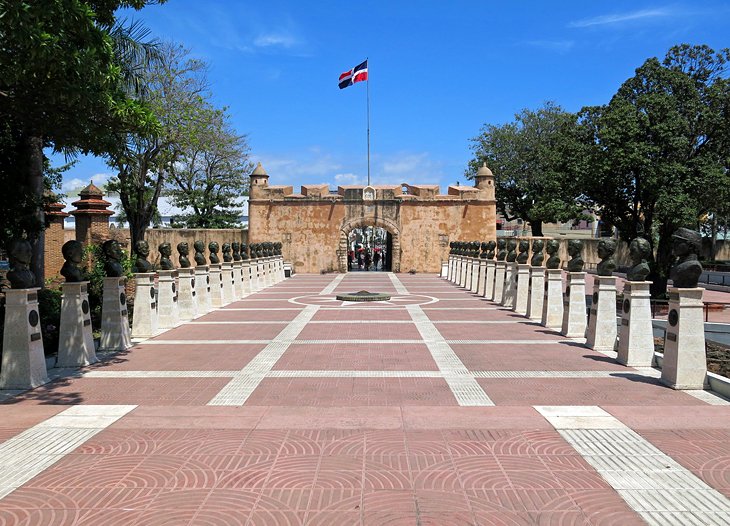
At the far west end of Calle El Conde, Parque Independencia commemorates Dominican Independence. Entering through the huge Puerta del Conde, the square is lined with busts that lead to the Altar de la Patria (Altar of the Nation), a mausoleum where the founders of the Dominican Republic are laid to rest. The names Sanchez, Duarte, and Mella are prominently displayed inside.
This square offers little to no shade, apart from the mausoleum itself, and is very hot during the middle of the day.
14. Amber World Museum
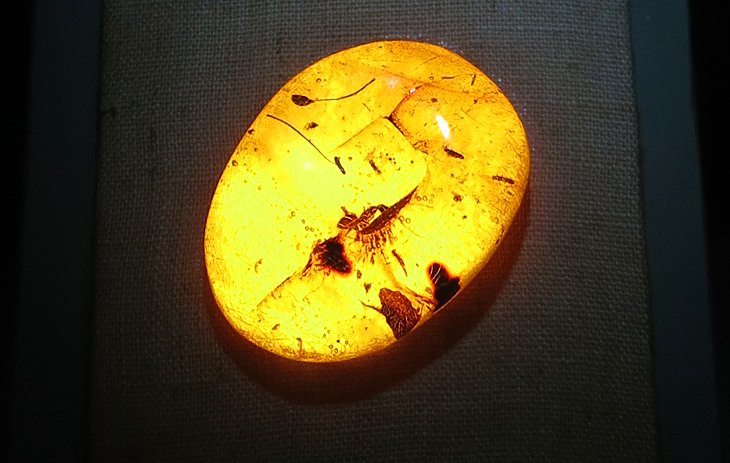
The Amber World Museum is an incredible place to see fine examples of amber and learn about this fossilized resin. Even if you have no interest in visiting museums, the visually striking displays here are worth a look.
For a very small admission fee, a knowledgeable English-speaking guide will lead you through the museum, walking you through the exhibits, which explain how amber is formed, mined, and used.
The amber pieces, which come in a variety of hues, are backlit to reveal the fossils inside, which range from ants and termites to leaves and flowers. Some of the pieces have magnifying glasses, so you can get a detailed look at the fossils. Note the curving handrail on the stairs to the second floor is made of amber pieces encased in acrylic.
The Dominican Republic is well known for amber, which here is almost always transparent, giving it a glow you don't always find in amber. You can frequently see fossils in Dominican amber, even in very small pieces.
Attached to the museum is a jewelry store where you can buy amber, as well as larimar, but there is no pressure to buy.
Address: Calle Arzobispo Meriño 452
Official site: https://amberworldmuseum.com/
15. Shopping
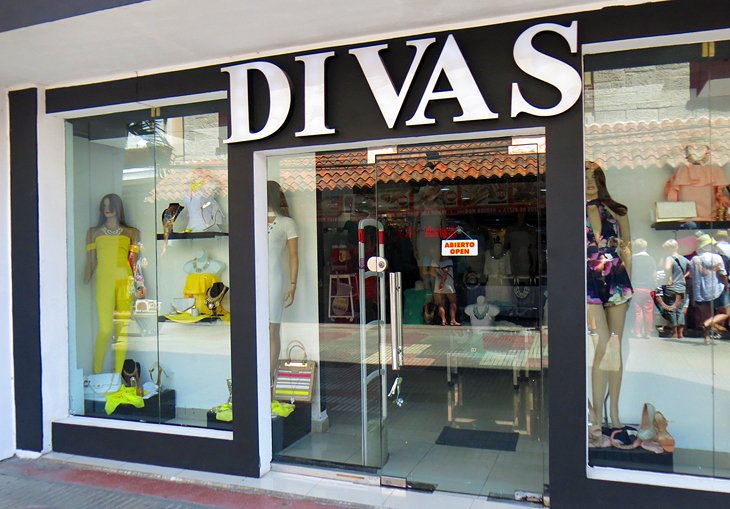
As the capital city of the Dominican Republic, Santo Domingo has some of the best shopping in the country. In the Zona Colonial is a mix of tourist oriented shops and regular shops where you can find Dominican fashions and everyday goods.
The Dominican Republic is a popular place to purchase amber and larimar, which you can either buy loose or in jewelry settings. Larimar is a semi-precious stone that comes in a variety of shades but is most commonly a pale blue. The translucent amber pieces, which are generally a golden orange color, often reveal fossils. Amber with fossils is considered the most valuable.
Many jewelry stores sell both amber and larimar, but for quality settings, you may want to stop by the first floor of the Amber World Museum, one block north of Parque Colón on Calle General Luperon, where the shop sells a large variety of amber and some larimar.
For clothing and fashion, take a walk along Calle El Conde towards Parque Independencia. You can find a variety of boutiques and reasonably priced stores all along this street and the side streets.
Outside of the Zona Colonial, Santo Domingo, the huge Agora Mall has all kinds of international shops. Swing by here if you need a break from the heat, as the entire place is delightfully chilly. It's about 30 minutes from the Zona Colonial and is on the Santo Domingo Metro System.
16. Convento de Los Dominicos
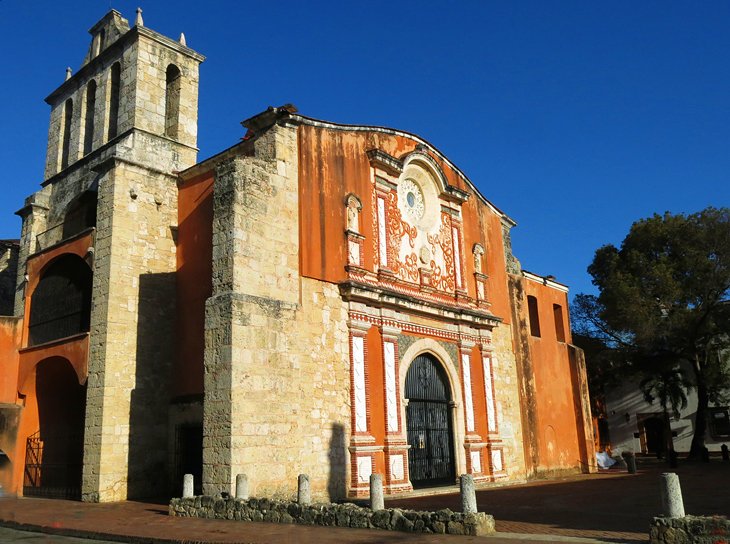
While the Catedral Primada de Américas gets all the attention as the first cathedral in the New World, the Convento de Los Dominico pre-dates the cathedral and is known as one of the oldest buildings in the Americas.
Begun around 1510 and put into use in various stages until it was finally completed in 1531-32, the convent later went on to become a teaching institution and eventually became the start of what is today the University of Santo Domingo.
The Convento de Los Dominico, with is ochre and coral façade, practically glows in the late afternoon sun, making it one of the more stunning old buildings in the city. Inside, the spectacular vaulted ceilings and ornate gold and mahogany altar are well worth a look.
Location: Padre Bellini and Avenue Duarte
17. Bicycle Ride or Tour through Santo Domingo
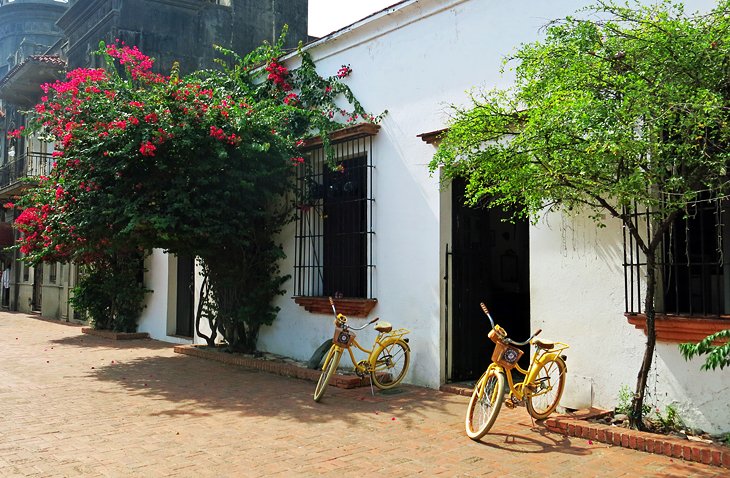
Semi-adventurous tourists can rent a bicycle or take a trikke tour to explore the streets of Santo Domingo. While it may seem daunting to make your way through an unknown city on a bicycle or scooter, the streets of Santo Domingo's Zona Colonial are almost all one way streets with only single-lane traffic, making it a delightful place to give this a try.
Most of the streets are not particularly busy, intersections are easy to navigate, and you don't have to worry about crossing multiple lanes of traffic. The main hazards are the deep gutters lining the sidewalks.
The large, wide-open space of Plaza España is a great place to try out your bike or trikke before tackling the narrower streets. From here, you can either plan out a route or simply make your way up and down the streets, which are laid out in a basic grid pattern.
Bicycle rentals are available at Zona Bici Bike Rental or Sunny Bikes RD.
Official site: https://zonabicird.com/bicisyprecios/home/
18. Photographing the Zona Colonial
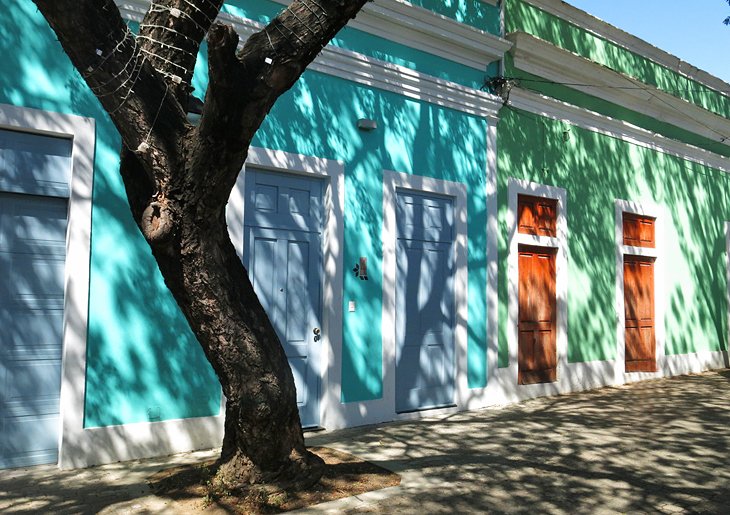
The streets are a riot of color, and the old architecture, ranging from crumbling ruins to completely restored colonial buildings, provides endless subjects for photographers. The light can be very intense at midday, but the morning and afternoon sun can be wonderful for photographing this historical area.
The Museo de las Casa Reales faces east and is best captured in the morning when it is not in shadow. The ornate façade of Catedral Primada de America, and the Convento de los Dominicos, face west, with a warm glow falling over them in the late afternoon.
Streets worth investigating with your camera include the north section of Calle Hostos, where the street curves on a hillside lined with colorful, small wooden houses. On Callejón Macorís, south of Calle Padre Billini, near Parque Duarte, you will also find a colorful row of buildings.
Particularly lovely squares are Parque Colón, with pigeons and street entertainers, and the quaint Parque Duarte, lined with old buildings, benches, and trees.
Map of Things to Do in Santo Domingo
Frequently Asked Questions about Santo Domingo
When is the best time to visit Santo Domingo?
| Average minimum and maximum temperatures for Santo Domingo, Dominican Republic in °C | |||||||||||
| J | F | M | A | M | J | J | A | S | O | N | D |
| 29 20 | 29 20 | 30 20 | 30 21 | 30 22 | 31 23 | 31 23 | 32 23 | 31 23 | 31 22 | 31 21 | 30 20 |
| PlanetWare.com | |||||||||||
| Average monthly precipitation totals for Santo Domingo, Dominican Republic in mm. | |||||||||||
| 64 | 56 | 53 | 71 | 188 | 140 | 145 | 178 | 180 | 188 | 99 | 84 |
| Average minimum and maximum temperatures for Santo Domingo, Dominican Republic in °F | |||||||||||
| J | F | M | A | M | J | J | A | S | O | N | D |
| 84 67 | 84 67 | 85 68 | 86 70 | 86 72 | 87 73 | 88 73 | 88 72 | 88 72 | 88 72 | 87 70 | 85 68 |
| PlanetWare.com | |||||||||||
| Average monthly precipitation totals for Santo Domingo, Dominican Republic in inches. | |||||||||||
| 2.5 | 2.2 | 2.1 | 2.8 | 7.4 | 5.5 | 5.7 | 7.0 | 7.1 | 7.4 | 3.9 | 3.3 |
The best time to visit Santo Domingo is November through March. At this time of year, the temperatures are not too hot, and the weather is generally sunny and dry with lower humidity than the summer months.
What are the best day trips from Santo Domingo?
Santo Domingo really doesn't have any spectacular beaches, so if you are craving sun and sand, consider a beach trip. One of the best is an excursion to beautiful Saona Island. This full-day tour takes you to a small island with swaying palm trees and calm, warm water where you can swim, snorkel, or just lie on the beach.
For more ideas on places to visit around the island, see our guide to the top attractions in the Dominican Republic.


